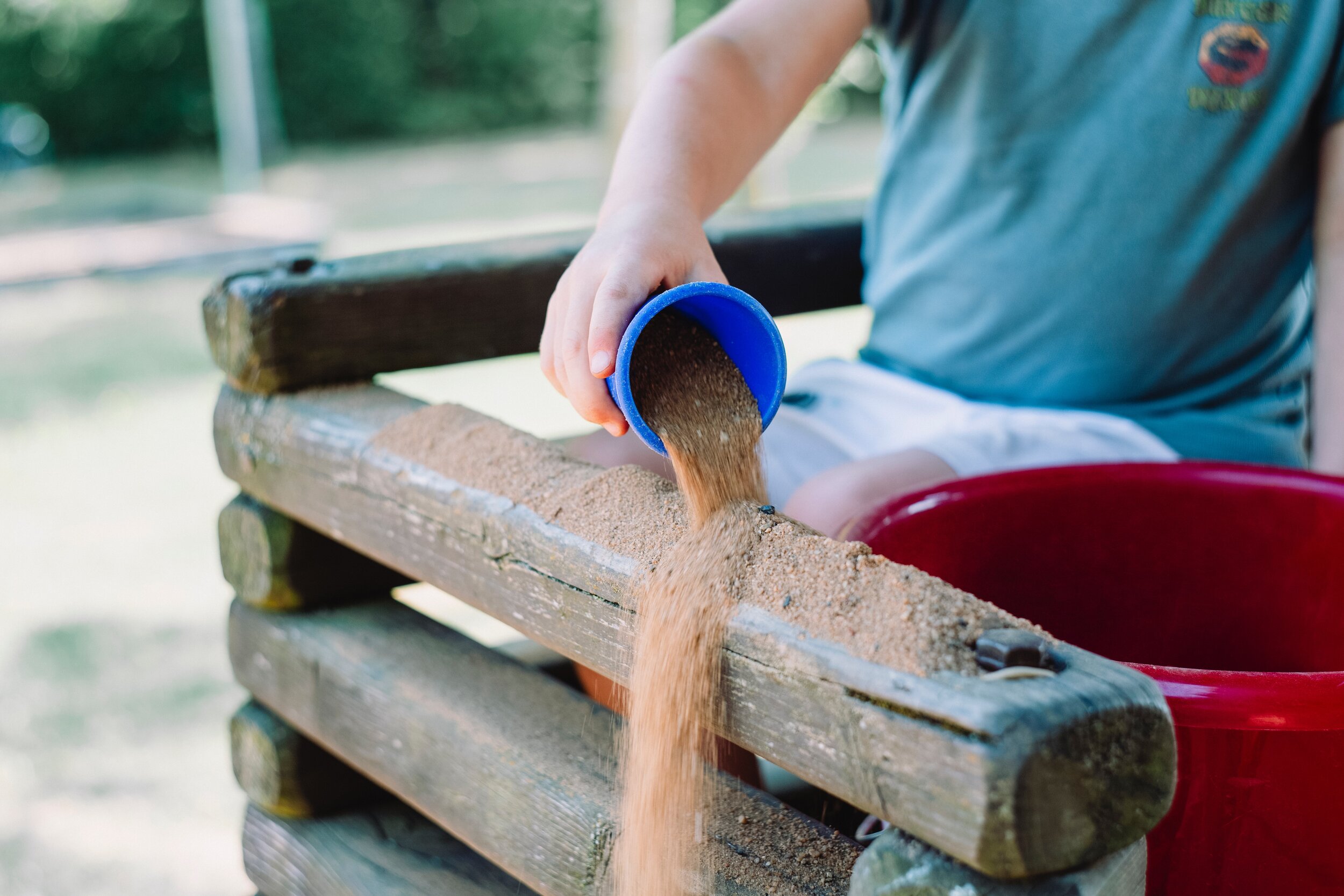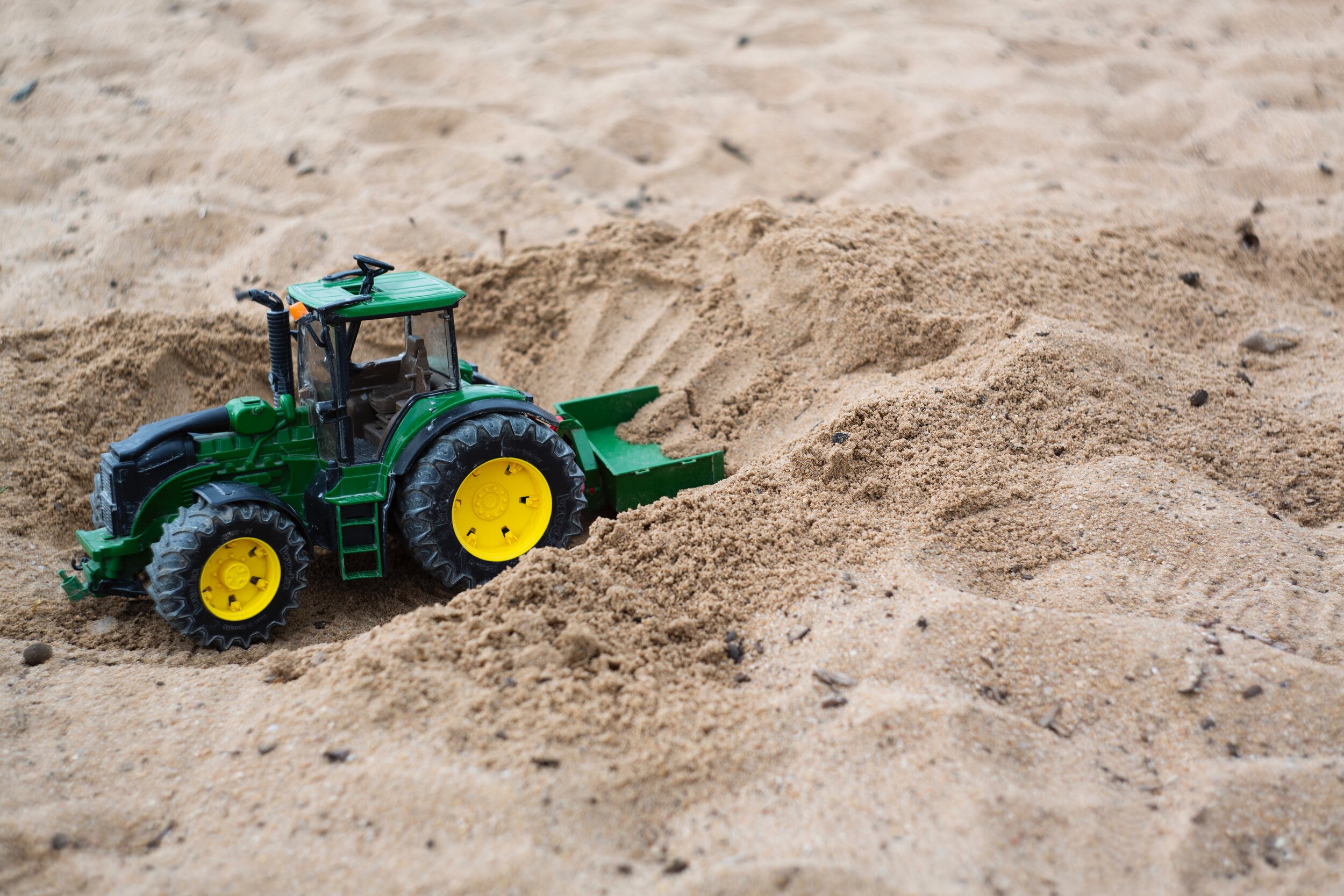Sand Play - Messy Sensory Play Time Activity Ideas
Sand Play – Sensory Messy Play
TheraPlay4Kids.com
Playing in the sand, whether a sand box, at the beach, or in a basin of sand, is a great opportunity for children to have unstructured pretend playtime.
Sand play provides for endless play that is fun, promotes learning, provides sensory input and body/self-awareness, as well as helping to develop fine and gross motor skills.
TheraPlay4Kids.com
Sand playtime with others can also promote social interaction, and social behavioral skills such as sharing, working together, and turn-taking.
Sand Play is a wonderful media to use for messy sensory play!
You can use a sand box at home or at the park, a clean sandy area at the beach or lake, a large bin filled with sand, a plastic storage container of sand, a sand-play table, or even a small plastic play pool filled with play sand ~ you can create a great space for sand-play with whatever works for where you live and how much space you have!
TheraPlay4Kids.com
Sand Play – Sensory Messy Play Activity Ideas
If your child cannot tolerate the texture of sand, some alternatives to sand are a container or tub filled with dried beans, rice, pasta, shredded paper, packing peanuts, bird seed, or pom-poms, as examples. Keep these items dry! If you need to toss out after use it may be advisable, as damp or wet dried foods or seeds can grow mold or attract little critters and bugs.
TheraPlay4Kids.com
In your sand play area, you can choose any and all of the following activities:
1. Add a variety of small toys and items that your child can use for pretend play (trucks, play animals, play people, play building blocks or logs, and so on)
2. Bury items (keep a list!) and then go on a sandy scavenger hunt
3. Bury 10 or so rubber or plastic dinosaurs and smooth rocks then go on a dinosaur dig; if you have pictures of the dinosaurs you are looking for they can match up the dino to their picture as they find them
4. Provide utensils and cups, containers for pouring sand from one spot to another; use plastic shovels and pails for play in the sand
5. If your child cannot yet handle all that sand, try large containers filled with big plastic balls, or smaller containers of noodles, beans, or rice.
TheraPlay4Kids.com
6. Always supervise when small choking hazards are in use!
7. Have your child bury their foot, their leg, both legs; by burying a leg or foot in the sand your child receives sensory input as to their body position, proprioceptive sense, and their physical interaction with their surroundings.
8. Paint small smooth rocks with letters (A, P, M, and so on) and bury them in the sand – have your child look for and find all the letters that make up their name
9. Hide a variety of different colored chips, rocks, toys, and have your child search and find specific colors
TheraPlay4Kids.com
10. Make some sensory sand dough, also called kinetic sand (for use inside, outside, to take on a trip, and to use in a sensory bin) Click the link for recipe!
11. Make some sensory sand foam for some great sensory play! Click the link for the recipe!
12. Make some homemade slime and add some play sand and or some colored sand to the slime for texture variety. Click the link for a whole recipe listing of ideas for homemade slime (including edible!)
13. Make your own sand art bottles; use clean glass jars and containers of different sizes – take the label off – fill with layers of colored sand for some great creative art work! You can use food coloring to dye the play sand, or buy colored sand at a craft store.
14. Make your own “sand city” with toy cars, trucks, houses, building roads through the sand to connect the different houses, stores, and parks! Pretend play a trip through town or a trip to visit the zoo!
TheraPlay4Kids.com
15. Make some great textured Sand Paintings! Mix some play sand with acrylic paints or kid-safe liquid finger paints and paint away on cardboard, a rock, a canvas, or art paper. Mix up a variety of colors using paper cups for each color for easy clean up. Paint with a brush, sponges, or fingers.
16. Draw lines, shapes, or letters and words into the sand with a stick, a brush, a finger, or a big spoon
17. Pretend play a trip to the beach with a big plastic beach pail, plastic play shovels, plastic beach critters, shells, even a beach umbrella to sit under!
TheraPlay4Kids.com
18. Fill up clear plastic “squeeze bottles” with a variety of colored play sand and let them squeeze the bottles to draw with color – they can “draw with sand” onto the grass, patio, or right into the sand play area. Snip off the tip end of the squeeze bottle a bit to make the sand flow out easier.
19. Jump in to the sandbox and play along with your child! Have fun together!
Ideas for Items to Add to Sand Play:
Plastic and hard foam letters and numbers
Large puzzle pieces (use from puzzles where you have lost pieces or use those pieces from the 10-20 puzzle piece boxes)
Plastic and rubbery critters, animals, snakes, people, small toys, cars
Plastic construction building blocks and leggo-type blocks
Game pieces (checkers, chess pieces, large bingo chips, dice, and so on)
Fidget toys
Large marbles, jingle bells, large plastic Christmas bulbs
Cups in a variety of sizes and small containers with lids
Large serving spoons, ladles, spatulas
Sea shells
Small smooth rocks
Wooden or plasti-coated alphabet blocks
Plastic eggs (they can open and fill them if they want, or use to decorate)
Pretend play plastic foods
Plastic cookie cutters in a variety of shapes and colors
Small watering can, plastic garden tools, small pots
Gloves if your child would prefer to not touch the sand
TheraPlay4Kids.com
Sand Play Safety Tips
Keep sand boxes, sand tables, or sand-filled containers covered to avoid the sand getting wet, animals using the box for a bathroom break, or for other critters that may want to burrow into the sand.
Wet sand can turn into a breeding area for a variety of bugs – keep dry and fun!
Read the label as to whether the play sand is taken from rivers and beaches. Avoid any play sand composed of ground limestone and crystalline silica as these types of crushed mineral sand may emit dust and leave you feeling dusty.
Plastic sand boxes (with covers if possible) are safer than wooden ones where your child could get a splinter or cut
Try to keep the materials used in the sand box clean and dry
Toss out anything that does not look or smell “quite right”
If playing outdoors in a sand box or at the beach, don’t forget sun protection!
Try to regularly inspect the sand and its contents before and after each playtime to keep your child safe – remove any items that are sharp, broken, looking moldy, or pose any safety risk
Please share! Thanks for your support of TheraPlay4Kids.com











